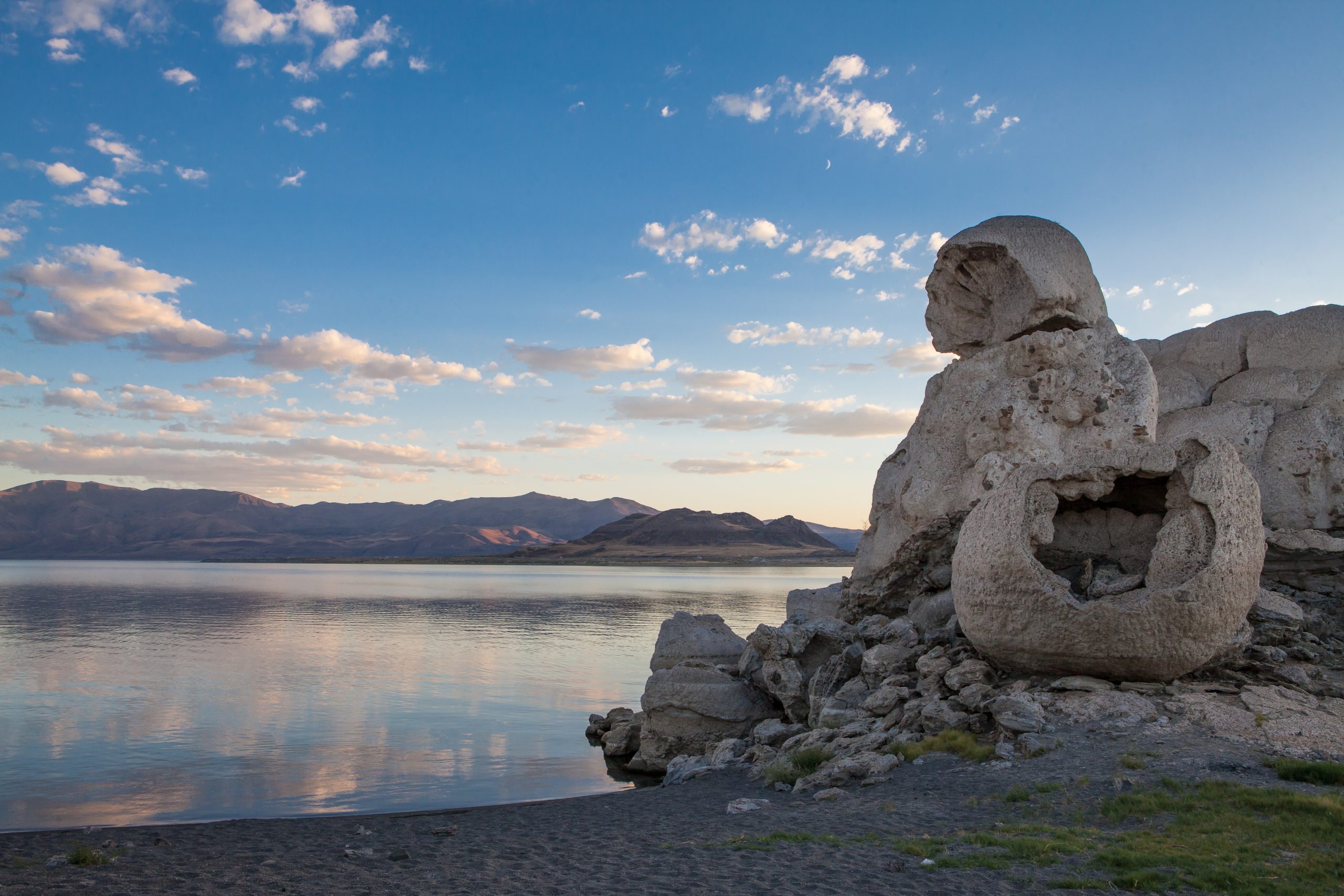The plan was to make the desert bloom by irrigating 350,000 acres of land in the Carson River watershed area using Truckee River water. Never mind that the Truckee River flowed north, emptying into Pyramid Lake. Send some water south — it will be fine.
In 1903, as its first project, the newly formed United States Reclamation Service (today’s U.S. Bureau of Reclamation) began construction of a diversion dam on the Truckee River. Completed in 1905, the Derby dam, sent 48% of Truckee River water 32 miles south to Lahonton Reservoir via the Truckee Canal.
The consequences of the water’s diversion to Lahonton adversely affected two species of fish, the Northern Paiute people, Pyramid Lake, and eventually, turned neighboring Winnemucca Lake into a dry lake bed. Early on, the Paiute began to notice the damage, but no one listened to their warnings, or their pleas.
In the early 1900s, few gave much thought to an area’s ecological health, or the plight of the land’s original people. Although, one sympathetic trader’s poignant observation still resonates: “There was never a hungry person on the reservation, they loved that kind of work—that way of making a living, and they had a dignity, which went away after the last (fish) run of 1937.”
Pyramid Lake, known as Cui-Ui-Pah before Fremont’s discovery, had been home to native peoples for so long that their beginnings were told in the legend of the Stone Mother. The people of the lake called themselves cui-ui ticutta (cui-ui eaters). The plentiful fish, known as cui-ui, are endemic to Pyramid Lake, and were vital to the physical, and spiritual well-being of the Northern Piaute.
By 1967, the surface of Pyramid Lake was 87 feet lower than it was before the construction of the Derby diversion dam. For many years, low water prevented spawning up the Truckee river. That, combined with pollution, doomed the Lahonton trout. But a fish that did not begin to breed until it was 8 years old, and could live as long as 40 years, had a better chance of surviving. It was their longevity that helped the cui-ui to endure for as long as 19 years without successfully reproducing.
Passage of the Endangered Species Act gave the Piaute tribe legal grounds to convince the federal government to limit the amount of water diverted from the Truckee River. The determined Piautes took their case all the way to the Supreme Court, reaching a settlement with the government in 1990. Though, it wasn’t until 2015 that the Truckee River Operating Agreement went into effect, insuring the continuation of the cui-ui and Pyramid Lake.
The cui-ui is not a widely popular game fish, and its life is limited to a lonely part of the world. But the cui-ui is, and always has been, prized by a persistent group of people who fought for 110 years to save their fish and its home from devastation by mismanagement.
There is a great lesson in this story.


 Facebook
Facebook
 Twitter
Twitter
 Pinterest
Pinterest
 Copy Link
Copy Link
